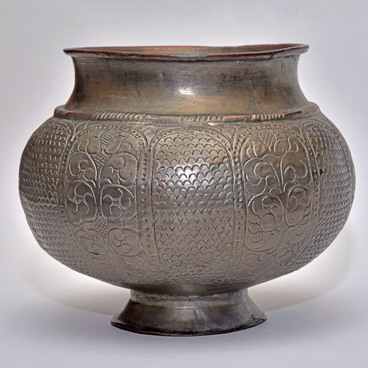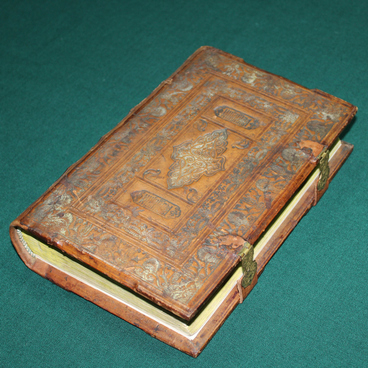The mouth harp is an ancient musical instrument of various peoples: the Yakuts, the Evenks, the Udmurts, the Chuvash, Mari people. It was often used for rituals, it was believed that the sound of the mouth harp could ward off evil spirits, cure diseases, lure animals for hunters or change the weather.
Vargan (mouth harp)
Creation period
12th–14th centuries
Dimensions
8x2,5 cm
Technique
Iron, casting, forging
Collection
Exhibition
1
Open in app#1
Vargan (mouth harp)
#2
#3
Mouth harps were made from iron, cut from bones, wood or cane. Metal instruments were solid and lasted the longest; with their loud and pure sound, they often served ritual purposes. Wooden or bone mouth harps were used to play traditional songs and dance melodies, children used to play with them. Such instruments were brittle, so few of the earliest mouth harps made from these materials have survived to the present day.
The iron mouth harps were of three types, depending on the technique of their manufacturing: some were wrought in the required shape, in others, half-wrought, a pre-made blank was then shaped into the instrument, still others were bent from a thick metal wire.
#7
The mouth wrap consisted of a U-shaped frame that looked like a horseshoe with extended ends and a flexible steel tongue in the middle. Musicians would grasp the frame’s ends with their lips and pull the harp’s tongue with their fingers to the rhythm. The loudness and pitch of the sound depended on the breath and lips position: compressed or semi-opened. Most often, the mouth harp would be played solo, but sometimes it was accompanied by a flute, spoons, or other musical instruments. People also used to sing along without word, mouthing a melody. This was called ‘singing to the tongue music’.
#4
The frame for the mouth harp which is displayed in the Bryansk State Regional Ethnography Museum was forged from a single piece of iron. Its tongue was cast separately and then welded to the finished frame. At its root, there is a connecting weld.
#6
Archaeologists have only found two instruments like this in the Bryansk region. One of them, manufactured in the 12th century, was discovered at the excavation site of the Old Russian city of Vschizh. The other one, displayed in the Bryansk Antiquities collection, was found in 1971 at the Pokrovskaya Gora settlement site in Bryansk. That harp was made more recently — in the 13th or 14th century.
Both musical instruments are fairly well preserved. The Vschizh harp suffered from corrosion on the extended ends of the frame, while the Bryansk one had its steel tongue damaged. The museum’s restoration artists have cleaned it from corrosion and treated it with a special substance to protect the material from further corrosion.
#8
State Budgetary Cultural Institution Bryansk State Regional Ethnography Museum
read morehide
00:00
00:00
1x
Vargan (mouth harp)
Creation period
12th–14th centuries
Dimensions
8x2,5 cm
Technique
Iron, casting, forging
Collection
Exhibition
1
Open in app
Share

